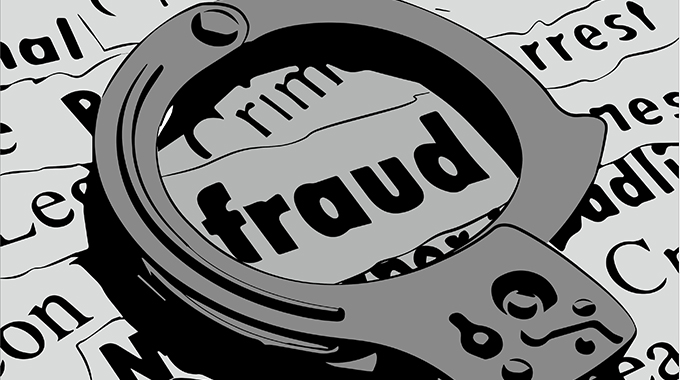Managing low back pain

Gilson Timire Correspondent
Low back pain (LBP) has shown to be a major problem throughout the world, with the highest prevalence among female individuals and those aged 40–80 years.
LBP causes more global disability than any other condition, and it is the leading cause of activity limitation and work absence in the world.
The 2010 Global Burden of Disease Study estimated that LBP is among top 10 conditions causing the highest Disability Adjusted Life Years (DALYs). LBP causes an enormous economic burden on individuals, families, communities, industry, and governments
A quick look at the brief structure of the spine can give a better understanding of how LBP may arise. The vertebrae have a hallow part that houses the spinal cord. The spinal cord is a tube made up of bundles of nerve fibre tracts and nerves. The nerves are the body’s communication system; they control the muscles in the body and carry messages back and forth between the brain and all body parts.
An intervertebral disc (IVD) sits between each vertebra. The disc has an inner jelly like substance called the nucleus pulpous, which is responsible for shock absorption properties of the spine. This jelly-like substance is surrounded by a firm covering called annulus fibrosis. A good posture of the back is a slightly arched one, called lordosis.
The lordosis reduces unfavourable forces on the discs, ligaments, muscles, and other connective tissues.
The vertebrae are also joined together by joints called facet joints and the ligaments. Ligaments support the spine and the muscles act to either initiate or control the required movement.
Causes of LBP
LBP can be due to an injury or disease, which can affect the IVD, ligaments, muscles, bones, or joints of the spine. The cause of most LBP cases remains unknown. Several risk factors for LBP have been identified, and they include work posture, manual handling, vibration, job satisfaction, stress, obesity, lack of social support, reduced physical fitness, and age. A back problem affecting the nerves can cause pain or abnormal sensation in one leg or both, and this is called sciatica.
People encounter these LBP risks in the following places or situations:
- a) At work — e.g., lifting heavy loads, driving
- b) At home — e.g., sitting on a sofa or doing gardening/laundry
- c) Worshipping either in a church or other places — sitting for long periods
- d) At school, college, or university — e.g., carrying books or sitting long periods of time while reading
- e) Entertainment and sports.
Poor sitting posture for long periods can affect the muscles, ligaments and discs of the back and neck resulting in neck pain, back pain, forearm/wrist/hand pain or headaches. This usually affects office workers, computer users, till operators, technicians, drivers, students, and home-sofa users.
Bending and twisting the back while lifting a load is a risk factor for LBP. A person should lift a load that is within their safe capability limits. Other factors like speed, repetition, force, duration, mental preparedness, and environmental factors, also determine the level of risk when lifting. For example, lifting a 20kg load at a faster speed has more LBP risk than at low speed.
Carrying a load with elbows straight (load further away from the body), and asymmetrical carrying can put a lot of stresses on the lower back. Pulling and pushing, both manual handling methods, are risk factors for LBP.
Whole body vibration (WBV) is another risk factor for LBP. WBV is shaking or jolting of the human body through a supporting surface, for example when driving or riding on a vehicle along a pot-holed road or operating earth-moving machines in the mining and construction industry.
Research has shown that stressful living and working conditions are risk factors for LBP and other musculoskeletal conditions. Stress occurs in life when our coping mechanism fails to meet the demands of life. When stress affect workers, it is called occupational stress.
Managing LBP
Someone with LBP can visit a medical practitioner to receive treatment. The medical practitioner may request investigations like an X-ray or an MRI scan. An MRI scan costs a lot of money in Zimbabwe. LBP treatment can include medications for pain and inflammation, physiotherapy, and health education. The best advice is: “Keep moving, even if you move slowly at first”.
Research has shown that someone with LBP can become stressed because of the condition, and this has a negative effect on recovery. Unfortunately, the stress is rarely addressed during the treatment process. This usually causes the LBP to recur and become chronic. This is costly for the employer, medical funder, family, society, and the nation. Although the physical, social, psychological, and economic burden associated with back problems seem to be overwhelming, the good news is that most back problems are unnecessary and can be prevented. This can be accomplished in five ways:
- a) Making the home and work environment safer, for example using a chair that supports your back well and an ergoprop when working in an office.
An ergonomics chair and a lumbar support ensure that the normal curves of the spine are maintained in sitting, and an ergoprop ensures a good posture for hands, wrists, neck, and shoulders. Other environmental factors like temperature, humidity, noise/lighting levels or workspace need to promote optimum human performance.
- b) Utilising proper body mechanics and work techniques, for example, keeping your body straight when lifting or carrying objects. Training in the use of safe manual handling methods can be provided by someone with the appropriate qualification.
- c) Some jobs involve some manual handling, and other stressful working postures that cannot be eliminated. However, if one gets breaks and vary activities frequently, they will less likely cause a back injury
- d) Managing stress through effective coping mechanisms, for example, relaxation.
- e) People who are physically active and fit have smaller chances of developing low back pain.
All the five preventive methods fall under ergonomics. Ergonomics looks at what kind of work you do, what tools you use and your whole job environment. The overall aim is to find the best fit between you and your work process. Ergonomics also places greater emphasis on occupational stress management and positive behaviour change.
There is strong evidence that occupational stress is related to high levels of musculoskeletal disorders, especially low back pain. Therefore, organisations must establish methods of assessing and managing the work stress. Understanding human behaviour is vital in finding an effective way to change workers’ behaviour.
The Transtheoretical Model (TTM), also known as Stage of Change (Prochaska & DiClemente, 1983), is a model of intentional change that focuses on the decision-making of the individual, which employers can use to promote positive behaviour change. It is a wise idea for employers in Zimbabwe to embrace comprehensive occupational health services (OHS), which have a sound ergonomics component. An effective OHS can reduce workplace injuries and illnesses, accident rates, workers’ compensation and healthcare premiums, and absenteeism.
Gilson Timire is an expert in evidence-based practices in the provision of occupational health safety services: work-risk assessment and management; occupational safety; ergonomics training and workers’ wellness.










Comments